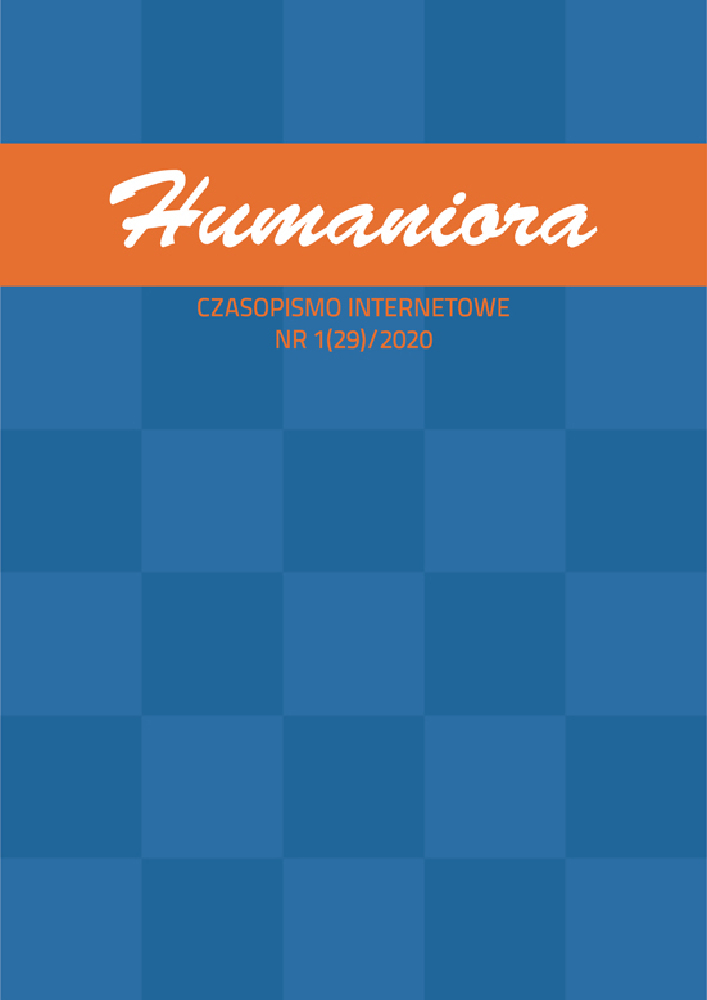Abstract
Spiritual awakenings tend to be associated with the religious rapture regardless of the spiritual path one decides to follow and are defined as temporary experiences whose main characteristic is the intensified sense of unity with the sacred. The nature of these particular phenomena gives rise to the need to carry out the in-depth analysis of the human responsiveness pattern in relation to the external stimuli, especially within the context of a religious experience. The limbic system, believed to be the headquarters of human emotions, tends to be easily activated, both verbally and non-verbally, and such activation may influence human behavior to a great extent. The principal objective of this paper is to provide a detailed classification of awakening experiences as well as to focus on the role of the amygdala and hippocampus in the production of particular religious experiences such as spiritual visions, speaking in the tongues or astral projections.
References
Becker E., The Denial of Death, Free Press, New York 1973.
Clarke I., Psychosis and Spirituality. Consolidating the New Paradigm, Wiley-Blackwell, Oxford 2010.
Csordas T.J., Elements of Charismatic Persuasion and Healing, “Medical Anthropology Quarterly” Vol. 2, No. 2, 1988.
Deikman A., Deautomatization and the Mystic Experience, http://deikman.com/deautomat.html [2.01.2020].
Donald M., Origins of the Modern Mind. Three Stages in the Evolution of Culture and Cognition, Harvard University Press, Cambridge 1991.
Fischer R., A Cartography of the Ecstatic and Meditative States, “Science” Vol. 174, 1971.
Franceschini P.R et al., The Limbic System Conception and its Historical Evolution, “The Scientific World Journal” 11/2011.
Greenwell B., When Spirit Leaps. Navigating the Process of Spiritual Awakening, Raincoast Books, Oakland 2018.
Grossman A., Clement-Jones V., Opiate Receptors: Enkephalins and Endorphins, “Clinics in Endocrinology and Metabolism” Vol. 12, No. 1, 1983.
Isaacson R.L., The Limbic System, Springer, New York 1982.
Joseph R., The Right Cerebral Hemisphere: Emotion, Music, Visual-Spatial Skills, Body-Image, Dreams, and Awareness, “Journal of Clinical Psychology” 5(44)/1988.
Joseph R., The Limbic System and the Soul: Evolution and the Neuroanatomy of Religious Experience, “Zygon” Vol. 36, No. 1, 2001.
Kobyliński A., Etyczne Aspekty Współczesnej Pentekostalizacji Chrześcijaństwa [The Ethical Aspects of Today’s Pentecostalization of Christianity], “Studia Philosophiae Christianae” 3(50)/2014.
Kobyliński A., The Global Pentecostalization of Christianity and its Ethical Consequences, “Chicago Studies” 2(55)/2016.
Krishna G., The Secret of Yoga, F.I.N.D Research Trust, The Kundalini Research Foundation, ltd., Ontario/Norton Heights 1990.
Kumar R., Kumar Larsen J., Shaktipat. Awakening of Kundalini by the Guru, New Dawn Press Group Inc., Elgin 2009.
McGuire M., Lived Religion. Faith and Practice in Everyday Life, Oxford University Press, Oxford 2008.
Mishara A.L., Narrative and Psychotherapy – The Phenomenology of Healing, “American Journal of Psychotherapy” 49(2)/1995.
Oakley D.A., Hypnosis, Trance and Suggestion: Evidence from Neuroimaging, in J. Barnier, M.R. Nash (eds), The Oxford Handbook of Hypnosis, Oxford University Press, Oxford 2008.
Oakley D.A., Hypnotic Suggestion: Opportunities for Cognitive Neuroscience, “Nature Reviews Neuroscience” Vol. 14, 2013.
Oswald I., Sleep, Penguin, Harmondsworth 1970.
Persinger M.A., Religious and Mystical Experiences as Artifacts of Temporal Lobe Function: a General Hypothesis, “Perceptual and Motor Skills” 57/1983.
Schwartz M.A., Mishara A.L., Altered States of Consciousness as Paradoxically Healing: an Embodied Social Neuroscience Perspective, in E. Cardeña, M. Winkelman (eds), Altering Consciousness: a Multidisciplinary Perspective, Vol. 2, Praeger, Santa Barbara 2011.
Taylor S., The Sources of Higher States of Consciousness, “The International Journal of Transpersonal Studies” Vol. 24, 2005.
Taylor S., Out of the Darkness. From Turmoil to Transformation, Hay House UK Ltd. 2011.
Taylor S., Transformation Through Suffering: A Study of Individuals Who Have Experienced Positive Psychological Transformation Following Periods of Intense Turmoil, “Journal of Humanistic Psychology” XX(X), 2011.
Taylor S., Spontaneous Awakening Experiences: Beyond Religion and Spiritual Practice, “The Journal of Transpersonal Psychology” Vol. 44, No. 1, 2012.
Taylor S., The Peak at the Nadir: Psychological Turmoil as the Trigger for Awakening Experiences, “International Journal of Transpersonal Studies” 32(2)/2013.
Taylor S., Energy and Awakening: a Psycho-Sexual Interpretation of Kundalini Awakening, “The Journal of Transpersonal Psychology” Vol. 47, No. 2, 2015.
Taylor S., Transformation Through Suffering: a Study of Individuals Who Have Experienced Positive Psychological Transformation Following Periods of Intense Turmoil, “Journal of Humanistic Psychology” 52(I)/2015.
Taylor S., Exploring Awakening Experiences: a Study of Awakening Experiences in Terms of Their Triggers, Characteristics, Duration and After-Effects, “The Journal of Transpersonal Psychology” Vol. 49, No. 1, 2017.
Taylor S., The Leap. The Psychology of Spiritual Awakening, New World Library, Novato 2017.
Washburn M., Embodied Spirituality in a Sacred World, State University of New York Press, Albany 2003.
Yilmazer-Hanke D., Insights into the Amygdala. Structure, Functions and Implications for Disorders, Nova Science Publishers, New York 2012.
Zubaran C., Sander J.W., Roxo M.R., Kleber F.D., Franceschini P.R., The Limbic System Conception and its Historical Evolution, “The Scientific World Journal” 11/2011.
License
Czasopismo oraz wszystkie zamieszczone w nim materiały są powszechnie dostępne i mogą być wykorzystywane do celów naukowych, edukacyjnych, poznawczych i niekomercyjnych bez konieczności uzyskiwania każdorazowej zgody autorów i redakcji. Nadesłanie artykułu do publikacji traktowane jest jako zgoda autora na udostępnienie swojej pracy i informacji w niej zawartych do powyżej wymienionych celów. W takich przypadkach należy jedynie wskazać źródło, z którego zaczerpnięte zostały informacje. Pobieranie opłat za dostęp do materiałów zawartych w czasopiśmie lub ograniczanie do niego dostępu jest zabronione.
Przesyłane do redakcji teksty muszą stanowić oryginalne prace, uprzednio nigdzie niepublikowane ani nie przedkładane innym redakcjom lub wydawcom. Autorzy nadsyłanych artykułów ponoszą odpowiedzialność za uzyskanie zezwoleń na publikowanie materiałów, do których prawa autorskie są w posiadaniu osób trzecich. Publikacja materiałów chronionych prawem autorskim jest możliwa pod warunkiem uprzedniego dostarczenia przez autora do redakcji pisemnej zgody właściciela praw autorskich.





